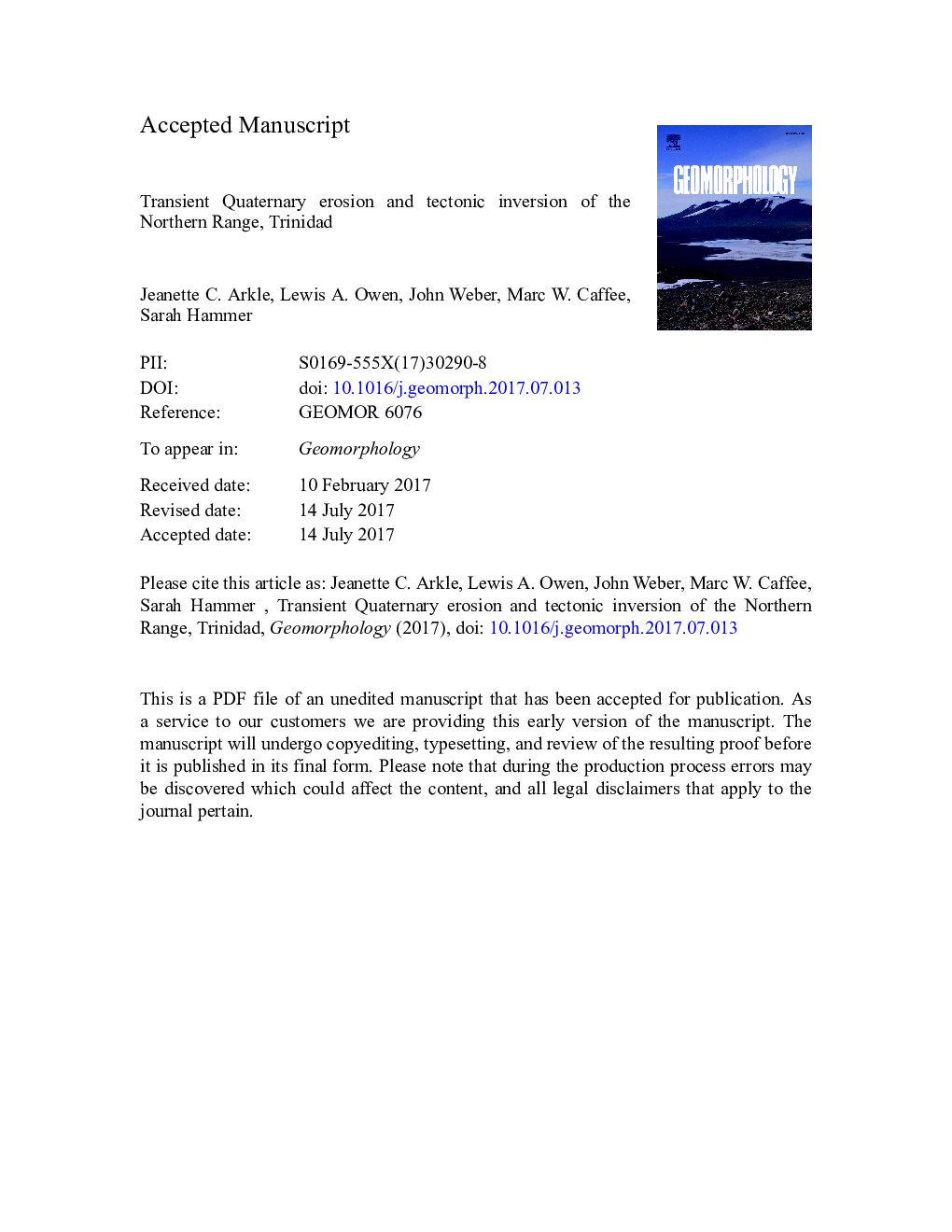| Article ID | Journal | Published Year | Pages | File Type |
|---|---|---|---|---|
| 5780760 | Geomorphology | 2017 | 62 Pages |
Abstract
Cosmogenic 10Be measured in sediments from Northern Range catchments on the island of Trinidad reveals low millennial-scale rates of erosion (average ~Â 40Â mm/ka) that increase roughly eightfold, from 11 to 92Â mm/ka, eastward across the mountain range. These results, in conjunction with an analysis of mountain morphometrics, are consistent with Quaternary east-side-up tilting of the Northern Range, which has occurred recently (~Â 100Â ka). The highest millennial-scale erosion rates coincide spatially with Quaternary east-side surface uplift (albeit not in magnitude), high modern rainfall rates, low topographic relief, and convex longitudinal stream profiles, indicating transient Quaternary erosion. We interpret that hillslope adjustment and erosion of the Northern Range is buffered from climatic and tectonic forcings by dense tropical vegetation cover, thick saprolite, and porous regolith. Compared with longer-term, thermochronology exhumation rates, we document that an order of magnitude deceleration of and reversal in the locus of erosion and exhumation has occurred during the Pliocene to the Holocene. We suggest that these combined data sets highlight distinct syn- and post-collisional phases of Northern Range development that are related to a major change in relative Caribbean-South American plate motion from oblique convergence to transform motion. Oblique collision during the mid-Miocene likely caused relatively higher rates of and asymmetric exhumation of the Northern Range. Post-collisional mountain-scale tilting is likely caused by a combination of crustal extension in the Gulf of Paria and by deep subsurface lithospheric detachment processes that drives dynamic topography.
Related Topics
Physical Sciences and Engineering
Earth and Planetary Sciences
Earth-Surface Processes
Authors
Jeanette C. Arkle, Lewis A. Owen, John Weber, Marc W. Caffee, Sarah Hammer,
